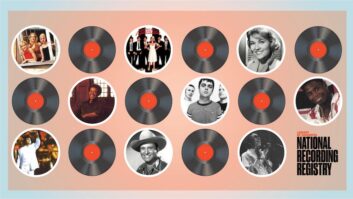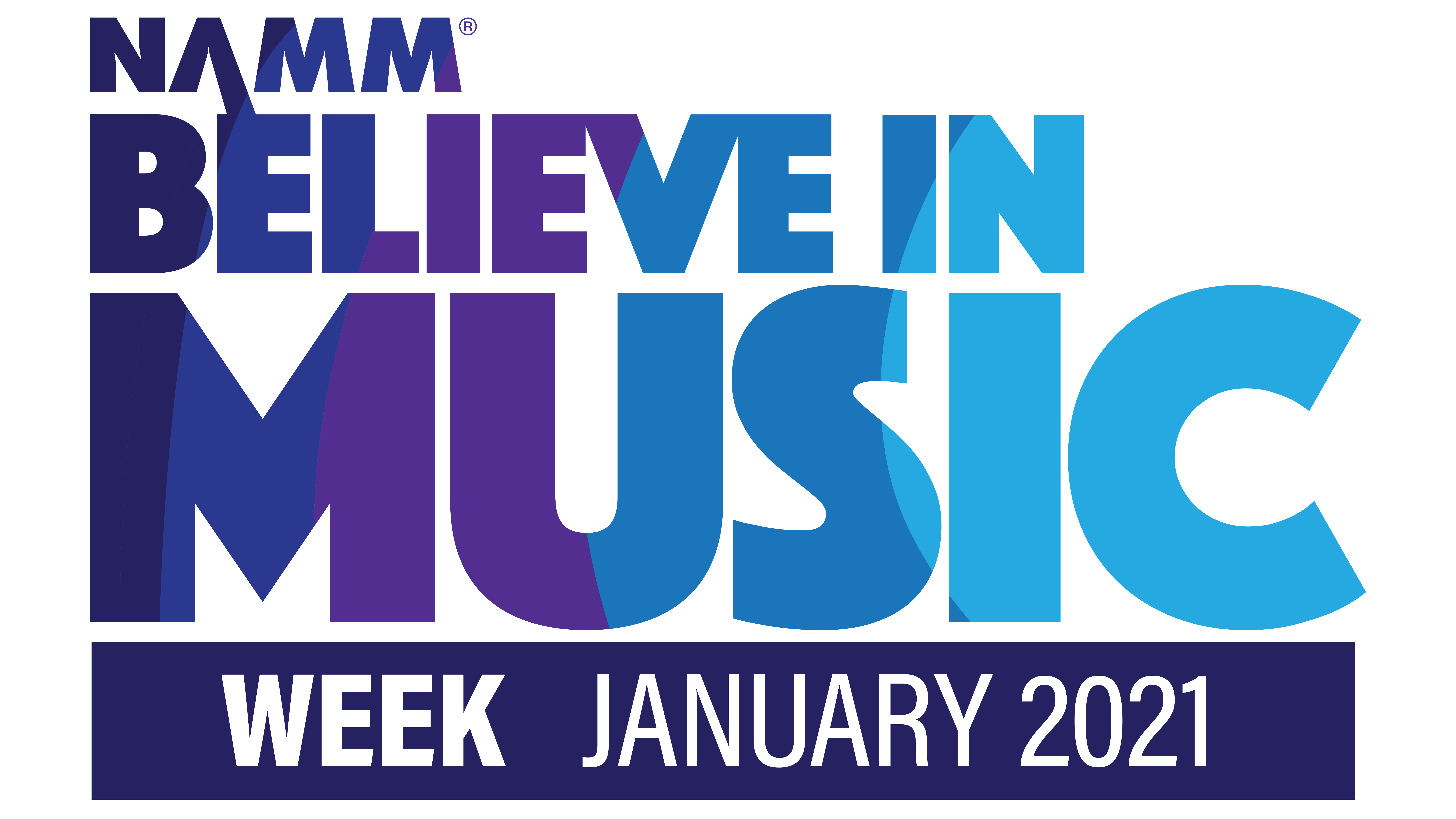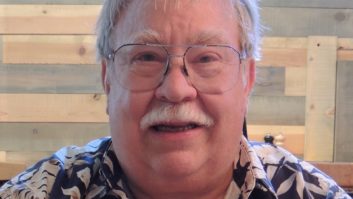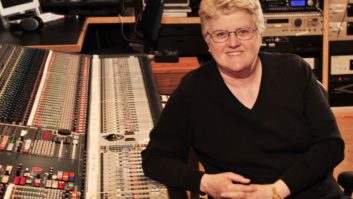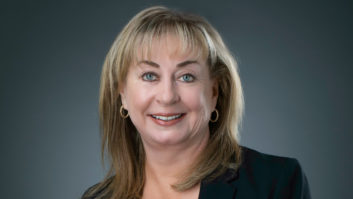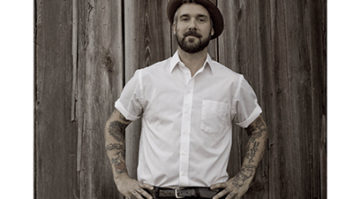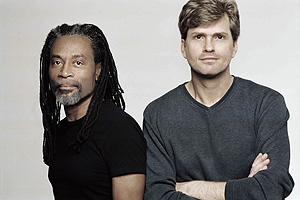
Bobby McFerrin (left) with composer/producer Roger Treece
Where do you go artistically as a singer when you’ve seemingly covered every base there is, from solo voice to intricate vocal ensembles, jazz to pop to classical, and earned 10 Grammys and a Billboard Number One single along the way? If you’re virtuosic vocal chameleon Bobby McFerrin, the answer is you expand your music in many directions at once, as he does on his impressive, genre-defying new album, VOCAbularieS.
The album includes just seven compositions, ranging from six-and-a-half to 11-and-a-half minutes in length—all co-written by McFerrin and noted composer/arranger/musician/singer/producer Roger Treece (with lyric contributions by Don Rosler)—sung by a remarkable, ever-shifting ensemble of voices, many singing several parts that have been further multiplied in the studio by Treece to create a “choir” unlike any other. The music is all over the map—literally. There are African-inspired tunes and grooves, bits of jazz mingling with classical touches, Middle Eastern and Indian musings, silky R&B, hints of both Gregorian and Tibetan chant, a dollop of doo-wop and smooth chorales that recall everything from Ladysmith Black Mambazo to the Swingle Singers to the Beach Boys. The words come from many languages—including McFerrin-invented ones—but just as often, the singing soars on wordless flights of melodic invention. With every song a multitextured journey in itself and vocal tracks numbering into the hundreds, it’s a long, long way from the simple layering of eight “Bobbys” for McFerrin’s 1988 chart-topper, “Don’t Worry, Be Happy” (see “Classic Tracks”).
The concept for the album came from McFerrin’s longtime manager and producer, Linda Goldstein, who in early 2001 drafted Treece to write a number of pieces based in part around some of McFerrin’s remarkable vocal improvisations. Though Treece is perhaps best known for his work with Manhattan Transfer, Goldstein says, “That was a starting place in terms of harmonic sophistication and development, but I felt that no one entered into this territory of really trying to capture the nuance and characteristics that Bobby has mastered and invented. It can’t just be the notes, but how are the notes conveyed and how are they phrased? Even technique-wise, is it the head voice, the chest voice, the throat voice? So Roger and I collaborated on this thing that is really an homage to Bobby in a way. I felt Roger had the sophistication to be able to do it, but he still needed his education in the ‘Bobbyisms.’” [Laughs]
Adds Treece, “What I understood at the beginning was it was going to be developmental work on Bobby’s stuff from a compositional level. Linda said, ‘What would Bobby do if he were a composer?’ So I was going to channel Bobby as the composer. Then, on a technical level, we knew that we wanted to record this music and it was all about vocals and voices and choral singing. At first, I didn’t want to do a lot of overdubs with every voice, but as the process went on, I found out it was okay to do that and it actually made a very rich sound.”

Treece says it took most of 2001 to write the songs at his Manhattan studio/workspace, Audible Art, and the initial vision after that was to have McFerrin come in and lay down template tracks for the whole album. Some of that did occur, “but as Roger began to delve more deeply into the through-composed aspect of it,” Goldstein says, “he ended up making templates himself [using piano mostly] and then we had Bobby come back in and sing the notes that were composed by Roger, so then Bobby was an interpreter. And then we did a lot of the overdubbing of the other voices on top of that, mostly one at a time, but Roger also brought in small groups.”
Goldstein says that “casting” the voices was surprisingly difficult because of the nature of the material. “There was an enormous amount of trial and error. There were pronunciation issues—some of the singers, great as they were, enunciated too much. In some sections we needed an R&B singer with classical chops, or someone with more guttural chops like the Bulgarian Women’s choir. There are all these nuances that Bobby just so freely and instinctively borrows from. You can be too in-tune; sometimes you need to funk it up a little—muss it up so it’s not quite so perfect.”
“After a while,” Treece adds, “it became clear what we were looking for on most of the songs, and I would bring in singers whose voices I knew would work and we’d have everything laid out. We had percussion, all of the voice tracks being played by piano parts, the whole thing measure by measure, tempo all mapped and ready to go. Then I would simply put things on a loop for a singer. We would rehearse how it would go, they would sing eight bars or whatever, over and over again until they basically had it memorized, and then I would loop them until I had 10 or 15 tracks of them, then I’d edit that down to six to eight tracks of, for instance, Janis Siegel of the Manhattan Transfer singing an alto part to something. There’s at least six tracks of every singer on each tune. I calculated in my head, if I have 150 to 200 tracks a song of finished voices, that means I recorded at least twice as many tracks, so I recorded each song at least 300 to 400 times.” The song “Messages” alone “has roughly 190 vocal tracks and about 30 percussion tracks and probably six miscellaneous synth tracks here and there—effects and such,” Treece says.
Treece, who engineered the album, says his fourth-floor writing and recording space is “just a room; not a real studio. But it has high ceilings and a nice liveness to it.” He used a single Neumann M147 tube condenser mic recording to Digital Performer “because the MIDI implementation works so well, and since I was working so much MIDI in this because of the samplers and doing all the percussion stuff—90 percent of the [instrumental tracks on the] record is either me playing percussion or me playing samples—tabla parts off the keyboard and such.”
Did Digital Performer have any problem working with so many tracks at one time? “Yes, it had a lot of problems,” he says with a laugh. “It wouldn’t be very friendly about playing more than 60 tracks back at one time. It wasn’t until 2004 or 2005 that I actually heard all the tunes the whole way through with all the voices on them.” Along the way, Treece did his own submixes of the vocal material—stereo pairs for each part (soprano, second soprano, alto, etc.)—“and then there was usually about 20 solo tracks per song: Bobby and other people doing miscellaneous parts; things I wanted to keep in mono.” Among the singers featured in addition to McFerrin and Siegel are Lisa Fischer and Luciana Souza. Treece sang bass and tenor on most tunes.
Treece’s rough mixes were then used as a guide for the final mixdown, which was done at Record One in L.A. by Treece and Allen Sides (plus engineers Steve Miller on two songs and Bo Joe on one). What did the other mixers bring to the party? “They brought their knowledge of effects for one thing, how to bring things out here and there to punch up the mixes,” Treece says. “For instance, Allen, because he’s mixed so much pop stuff, had an idea of me bringing out the percussion a little bit more on a few things. Allen’s thing was a real audio approach—really taking time to EQ everything right. The assistant [Bo Joe] and I would get up a mix and work on it for basically a day; we’d get it laid out. Then Allen would come in and do some basic EQs on everything, and we’d work with the panning a bit. Then [Bo and I] would work on it for another day, getting all of the balances right. I’d sit there at the computer and run things over and over again, mixing it in the computer. Then Allen would come in again after that process and we’d spend another day finishing it.
“Linda also had tremendous creative input on the mix. She really hasn’t received one percent of the credit she should have for this thing because she thought of it and she could always see what it was supposed to be. She was the keeper of the flame in terms of making it kind of cool and hip—anything but normal classical-sounding stuff. Our little catchphrase during the project was, ‘What would Brian Eno do?’”
